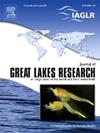Genetic pedigree analyses of Arctic grayling offspring produced to initiate the Michigan reintroduction program
IF 2.5
3区 环境科学与生态学
Q3 ENVIRONMENTAL SCIENCES
引用次数: 0
Abstract
Measures of genetic diversity among individuals within and between broodstock year classes of Arctic Grayling (Thymallus arcticus) were quantified as part of a large inter-disciplinary effort to repatriate the species into Michigan fluvial habitats. Genetic pedigree analysis of 200 juveniles from each of the 2019 and 2021 year classes indicated that 205 and 218 adults from a natural stream population in central Alaska contributed to offspring genotyped. Because broodstock sampling occurred in the same stream location each year and adults were not marked, 22.4 % of successful adults were estimated to have contributed to offspring genotyped in both years, indicating that the local adult population was philopatric to the spawning site and of moderate size. Measures of genetic diversity including heterozygosity and allelic diversity were high, while inbreeding coefficients (FIS), and estimates of inter-individual relatedness (RXY) of offspring genotyped within and between year classes were low. Collectively, results indicate that crosses conducted among adults to establish broodstock year classes had achieved restoration program goals of creating a genetically diverse domestic broodstock to use for future repatriation efforts.
为启动密歇根放归计划而生产的北极灰鲑后代的遗传谱系分析
作为一项大型跨学科努力的一部分,北极灰鲑(thyymallus arcticus)种群内部和种群之间的遗传多样性测量被量化,该努力旨在将该物种送回密歇根河流栖息地。对来自2019年和2021年每个班级的200只幼鱼的遗传谱系分析表明,来自阿拉斯加中部自然溪流种群的205和218只成年鱼对后代的基因型做出了贡献。由于每年都在同一河流地点取样,而成鱼没有被标记,估计两年中有22.4%的成功成鱼对后代基因型做出了贡献,这表明当地成鱼种群对产卵地点有亲缘关系,而且规模适中。遗传多样性(包括杂合度和等位基因多样性)测量值较高,而近亲繁殖系数(FIS)和后代基因型年内和年内的个体间亲缘性(RXY)估计值较低。总体而言,研究结果表明,在成鱼之间进行杂交以建立亲鱼年级,已经实现了恢复计划的目标,即创造一种遗传多样化的国内亲鱼,用于未来的遣返工作。
本文章由计算机程序翻译,如有差异,请以英文原文为准。
求助全文
约1分钟内获得全文
求助全文
来源期刊

Journal of Great Lakes Research
生物-海洋与淡水生物学
CiteScore
5.10
自引率
13.60%
发文量
178
审稿时长
6 months
期刊介绍:
Published six times per year, the Journal of Great Lakes Research is multidisciplinary in its coverage, publishing manuscripts on a wide range of theoretical and applied topics in the natural science fields of biology, chemistry, physics, geology, as well as social sciences of the large lakes of the world and their watersheds. Large lakes generally are considered as those lakes which have a mean surface area of >500 km2 (see Herdendorf, C.E. 1982. Large lakes of the world. J. Great Lakes Res. 8:379-412, for examples), although smaller lakes may be considered, especially if they are very deep. We also welcome contributions on saline lakes and research on estuarine waters where the results have application to large lakes.
 求助内容:
求助内容: 应助结果提醒方式:
应助结果提醒方式:


